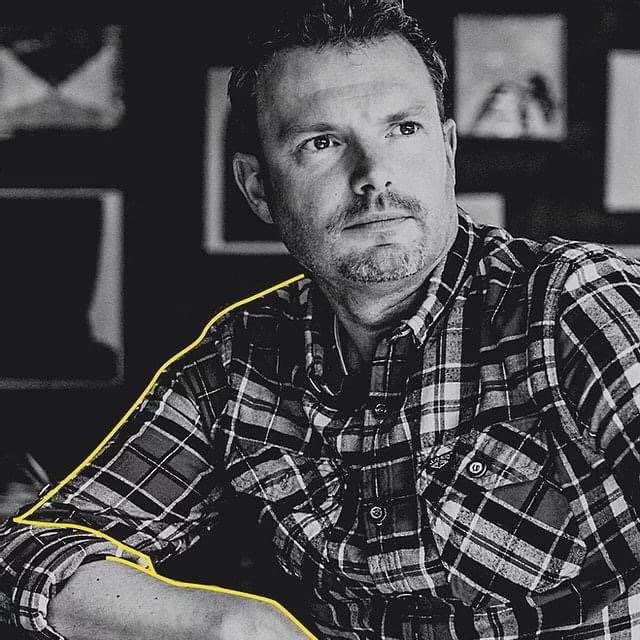-
Posts
4,779 -
Joined
-
Last visited
Content Type
Profiles
Forums
Events
Gallery
Everything posted by JeroenPeters
-
Those are nice rides! Would be nice to see everyone else's other hobby's, since I know many modelers are passionate about more things than just plastic! Mine is shooting and horses... Browning HP: And M1 Carbine: Who's next?
- 455 replies
-
- 11
-

-
Cool!! Love the pattern. Nicely done..
-

HK Models DH Mosqito B Mk.IV DZ637
JeroenPeters replied to James H's topic in LSM 1/32 and Larger Aircraft Ready for Inspection
Lovely... Hope mine will be 3/4 as good )) -

HK Models Mosquito B Mk.IV
JeroenPeters replied to James H's topic in LSM 1/35 and Larger Work In Progress
Wow.... Still at the office and no time to work on mine... This doesn't make it any easier -

Ju 88 Volume II, Kagero Monographs 3D Edition
JeroenPeters replied to JeroenPeters's topic in Tools, Books & Misc.
Actually just the bombers. I'm guessing a Vol III is imminent. -
Geeezzz.... I'm pretty much out of it these days.. Afraid I couldn't be of much help...
- 6 replies
-
- Tobruk 1941
- DAK
-
(and 1 more)
Tagged with:
-
Supercool. I like it a lot...
-

North Afrika, Kalahiri Desert, near Gaborone, Botswana - 1947
JeroenPeters replied to Fran's topic in Non LSM 'WIP
That's sweet Fran! And creative! -

Lt. Gustav Salffner's FW 190A8 "Weiss 6", of 7./JG300
JeroenPeters replied to JG26's topic in Non LSM 'WIP
That fuel tank.... love the layered effect... (might steal that technique myself -

HK Models 1/32 HK Models Mosquito B Mk.IV
JeroenPeters replied to JeroenPeters's topic in LSM 1/35 and Larger Work In Progress
Cheers Cees, Working on the tail anti shimmy wheel -

Panzer iii L - Finished-
JeroenPeters replied to coolboxx's topic in LSM 1/35 and Larger Work In Progress
Wow!!! That looks the part. Love the bent most-ketten. Cheers, Jeroen -

1:32 Hasegawa P47D "Slick Chick"
JeroenPeters replied to rkranias's topic in LSM 1/35 and Larger Work In Progress
Oh wow! Slick Rick!!- 118 replies
-
- Panzer Busters
- 368FG/395FS
-
(and 3 more)
Tagged with:
-
Monographs 3D edition #59 (3059) Ju 88 Vol. II Publisher: Kagero Written by: Marek Rys and Marek J. Murawski Available here from Kagero for € 21,97 What we have here is yet another 3D edition book in the Kagero Monograph line. Volume II on the venerable Ju 88. Volume I being number 3057 in the Monograph line and can be found here. Volume I focuses more on the design, development and construction of the Ju 88, whereas Volume II deals with the operational history. However: the 3D renders are complimentary, so having both books feels like a must. I have been raving before about the quality of the 3D renders in these series of books, and this title forms no exception. If you have built the 1/32 Revell Ju 88 these renders will make you want to start right over, since details are revealed in such clarity it feels like a crime to omit them… As always I’ll take you through this book chapter by chapter to give you an impression of it’s contents: The Phoney War – September 3, 1939 – April 8, 1940 The book immediately starts with the first operation theatre the Ju 88 served in. After all, development of the Ju 88 has already been covered in Volume I. The phoney war marked the start of Britain’s fighting with Germany. Compare it two guys starting a fight and circling and pushing each other before throwing any real punches. A perfect opportunity to test and tweak the then new Ju 88 and overcoming it’s child deceases. The chapter is coloured by vivid veteran stories, describing the attack of the British fleet, mostly in Norway. Operation Weserübung This operation was named after the river Weser and entailed the invasion and occupation of Danmark and Norway in order to prevent the British and French from strategically occupying it. Fierce Ju 88 attacks on the British flotilla followed with heavy losses on both sides. Again reports of Ju 88 pilots give us an idea of the chaos was caused. It almost reads like an action filled movie script. Western campaign – May 10 to June 22 This chapter describes the first attacks on western cities like Rotterdam. Vivid descriptions of how the Luftwaffe knocked out the defences before bringing in the Ju52 laden with paratroopers. From a modellers point of view, you’re longing for what’s coming next… 3d Renderings! I’ve not hidden the fact that I’m quite a fan of these 3D renderings. At the moment I’m working on a test shot of the 1/32 Mosquito. As I’m no RAF expert I need all the reference I can get my hands on. Today I was looking for detailed reference material on the bomb aiming instrument. After 5 or 6 books I finally found what I was looking for. One black an white photo, but it had to do. This series of books takes the entire plane apart and renders vital instruments from all sides. In close up. In color. These pages start with the canopy mounted square compass, followed by the rear wall with radio equipment, ammo drums, bombsight (spread over 15 pages!!), instrument panel, rudder pedals, steering column. Verdict Do yourself a favour when modelling the Revell Ju88 and get yourself a copy. And don’t forget Volume 1. It will save you hours searching the web for that particular photo or angle… I applaud this growing range which are becoming a standard 'tool' on my workbench. I’m rating this book a 8,5 out of 10. As far as I’m concerned the 3D renderings can fill a bigger portion of the book. 2/3 instead of ½. If that was the case, I’d throw in a 10 out of 10. Our sincere thanks to Kagero for the review sample. You can buy your copy online direct from Kagero's website here. Jeroen Peters
-

HK Models 1/32 HK Models Mosquito B Mk.IV
JeroenPeters replied to JeroenPeters's topic in LSM 1/35 and Larger Work In Progress
Ok, made some progress n the pit this weekend. Added: - Airscale instruments - Airscale bezels - Airscale placards - Lead wire and instrument housings from plastic rod - HGW Sutton seatbelts The pit construction is quite clever as you can see. The pit is assembled and slides into the one piece moulded outer fuselage. The small discs on the inside of the pit are not ejector pin marks, but strengthening discs to accommodate instruments, wires, etc... (thnx Cees!) -
I think Ted will have a field day riveting this!
-
Wow. That fireplace looks too real.. Actually.... it all does!!! Heel gaaf..
-

1/35 Tamiya BT-7 1937
JeroenPeters replied to Dave J's topic in LSM 1/35 and Larger Work In Progress
Nice start. The BT-7 is a kit is sometimes look for. Keeps pulling me in. Let's see if you can give me the final push... -
I agree. You can post any ship you like in the none LSM section. Especially if it's below 1/35 scale. Personally I wouldn't mind if someone would posts a 1/35 Vosper or S100 Schnellboat from Italeri in the Armor section. Or maybe a mini sub. Like the Seehund. Or the coming X-craft from Italeri: http://militarymodels.co.nz/2013/02/05/coming-from-italeri-this-year-135-x-craft-rn-midget-submarine/ Cheers, Jeroen
-
I've heard it's one of their best kits to date... Price on the high side though. We will be reviewing both the early and late type as soon as they arrive on our door mats! Stay tuned.
-

Zoukei Mura 1/32 Horten HO-229
JeroenPeters replied to colt6's topic in LSM 1/35 and Larger Work In Progress
AAA saw this on Facebook Thought it looked familiar! Nice start. Will be having a go at mine soon (in tandem with Jim). Cheers! -
Have some Cava on us! You deserved it...
-

Tamiya Spitfire Mk IXc
JeroenPeters replied to NOVAModeler's topic in LSM 1/35 and Larger Work In Progress
Sweet! You entering this in the new Group Build? Starting march 1st?

